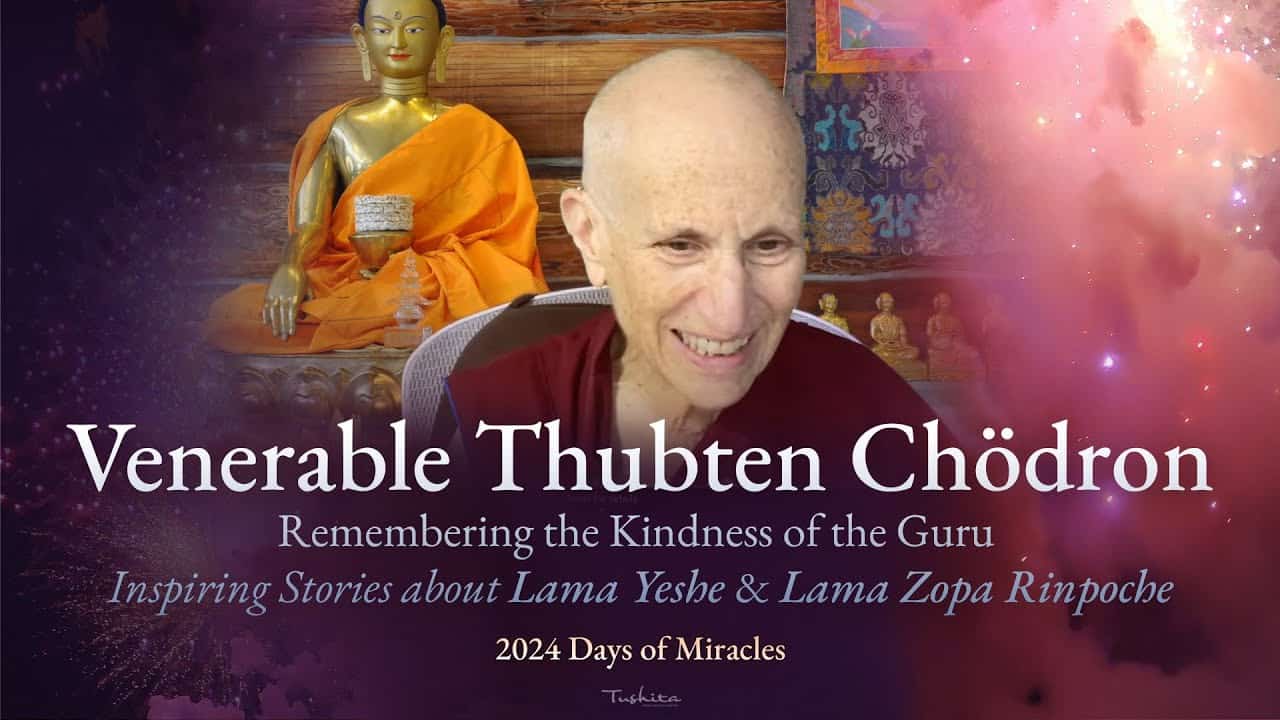Nothing is to be removed
127 Samsara, Nirvana, and Buddha Nature
Part of an ongoing series of teachings (retreat and Friday) based on the book Samsara, Nirvana, and Buddha Nature, the third volume in The Library of Wisdom and Compassion series by His Holiness the Dalai Lama and Venerable Thubten Chodron.
- Explanation of the same verse in Ornament of Clear Realizations and Sublime Continuum
- Empty nature of the mind and clear light mind
- Uninterrupted path and liberated path
- Description of subtlest innate clear light in Dzhgchen and Mahamudra
- Relationship between the transforming buddha nature and third factor of the tathagatagarbha
- Continuum of the mental primary consciousness
- Explanation of fundamental clear light mind in Tantra
- Difference between the primordial clear light mind described in Tantra and the clear light mind described in Sutra
- Explanation of composite nature body and omniscient mind of a buddha
- Correctly understanding the meaning of “Within afflictions, wisdom abides”
- Natural nirvana and nirvana of the liberated beings
Samsara, Nirvana, and Buddha Nature 127: Nothing is to be Removed (download)
Contemplation Points
- Maitreya includes the same verse in two separate texts with very different meanings. What does verse refer to in the Ornament of Clear Realizations? By contrast, what does it refer to in the Sublime Continuum? How do each of these explain the elimination of afflictions and defilements?
- Why is that the third factor of the tathagatagarbha – the factor that is the seed that serves as the basis for the actualization of the three buddha bodies – cannot refer to the transforming buddha Nature? What is it that Tantra asserts that is not present in Sutra?
- How do the explanation of the clear light mind differ between Sutra and Tantra? What does Tantra assert are the only times the clear light mind becomes manifest?
- It is easy to misunderstand statements such as “within afflictions, wisdom abides” and “three kayas in the ordinary state”. This does not mean that we are already buddhas. What are the great sages saying when they make statements such as these?
Venerable Thubten Chodron
Venerable Chodron emphasizes the practical application of Buddha’s teachings in our daily lives and is especially skilled at explaining them in ways easily understood and practiced by Westerners. She is well known for her warm, humorous, and lucid teachings. She was ordained as a Buddhist nun in 1977 by Kyabje Ling Rinpoche in Dharamsala, India, and in 1986 she received bhikshuni (full) ordination in Taiwan. Read her full bio.


